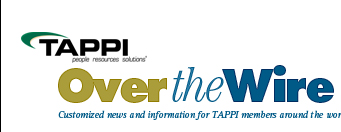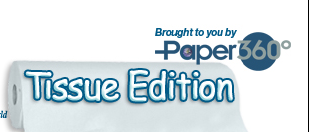WEPA Progressing Toward Nuclear-Free Tissue Machine Quality Control
 Print this article | Send to Colleague Print this article | Send to Colleague
WEPA's Giershagen, Germany, tissue mill has successfully replaced two scanning nuclear basis weight sensors with Metso infrared units that measure both weight and moisture. The mill now plans to become nuclear-free in a few years.
The Giershagen mill, the largest tissue mill in Europe's WEPA group, was the first to adopt this technology in two of its Metso (Finland) QCS systems. The new IQFiber infrared sensor was positioned beside a normal nuclear basis weight sensor in a new PaperIQ Plus system that replaced an aging QCS system. If the new technology performed as they hoped, the mill would consider replacing nuclear sensors on all three of its tissue machines that produce a combined 98,000 metric tpy of toilet tissue and kitchen towels from 100% recycled fiber or 100% virgin pulp.
Until now, nuclear basis weight sensors have been the standard for scanning the tissue web. Over the years, nuclear sensors have been regularly improved to give very precise, repeatable readings, Metso explains. To provide an oven dry basis weight reading for control purposes, infrared moisture sensors have been positioned normally alongside. Today, that infrared technology has been developed and refined by Metso to the point where it can take over the task of measuring oven dry basis weight (fiber weight) with the same precision as a nuclear sensor and also measure moisture at the same spot of paper, Metso says. These sensors with two purposes combined into one, are now making nuclear sensors redundant and eliminating the need for them entirely, Metso continues.
Frank-Peter Folcz, mill manager at Giershagen, reports that "we do not see any difference running this (infrared) sensor or the nuclear sensor." This is exactly the result the mill was aiming for. He notes that the costs and time involved in specialized nuclear sensor handling and training has been avoided and one less sensor is needed. And, when the mill goes totally nuclear-free, the need to train employees in nuclear safety will be eliminated.
Jörg Reine, production manager, says machine operators were tentative at first but now accept the new measurement and use the control continuously. He adds that the difference between the new PaperIQ on PM 7 and the old QCS "is like night and day," since all of the control functions are now used effectively. "It was a huge step from 20-year-old technology. Now the machine is more stable and we have more even quality and better runnability in the converting lines (located on site). With better measurement we can run the quality to the extreme target values while still running at high quality, faster, and with less broke," he adds.
With more even moisture profiles controlled by the sectionalized hood, the average moisture levels on PM 7 have been raised by 1.5 %, thereby saving the equivalent amount of fiber furnish. While it is difficult to compare before and after energy levels of the rebuilt PM 7, the mill feels energy savings have been realized.
With two machines running with single infrared sensors, only PM 4 still awaits conversion. With a radioactive source replacement pending in a few years, the mill will then be nuclear-free.
   
|
|

